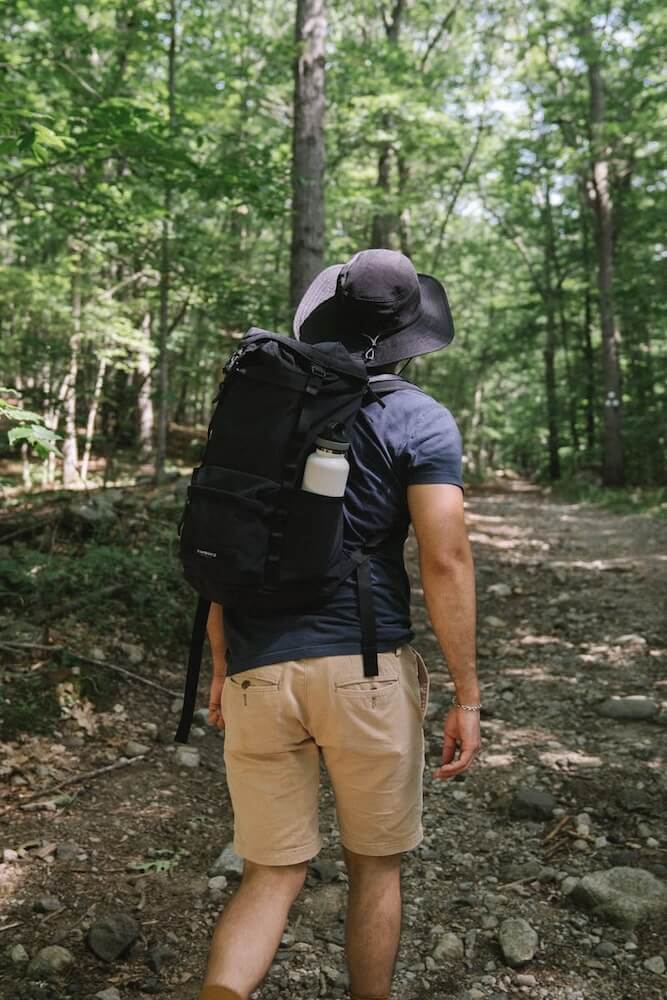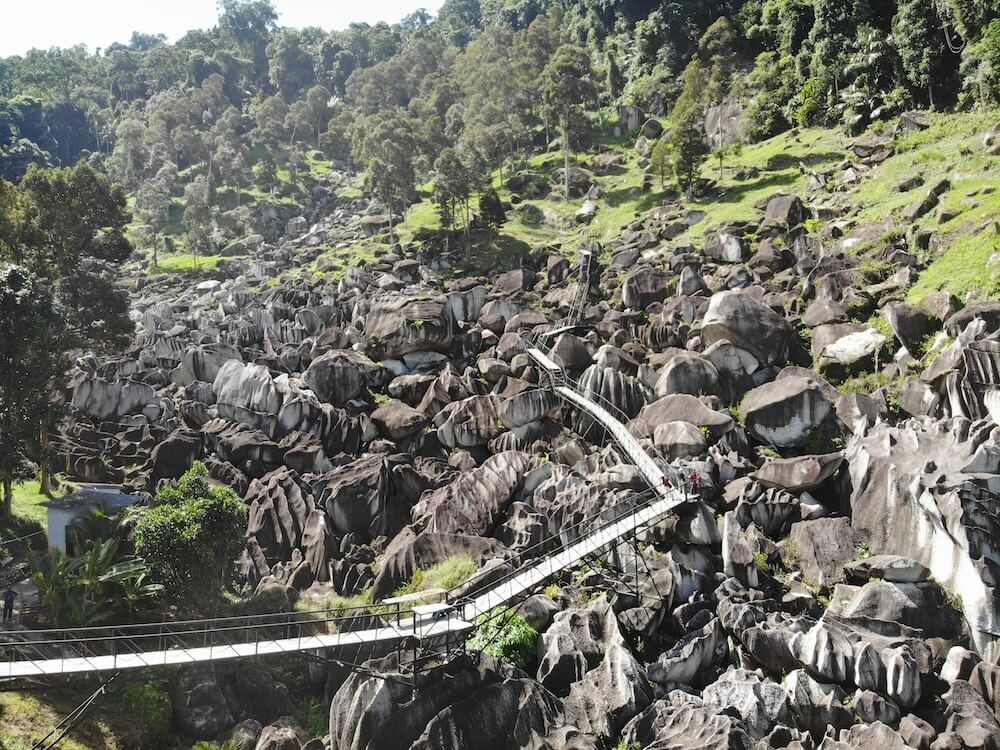Your Next Hike Will Be A Far More Comfortable One With Our Comprehensive Guide On Packing For A Day Hike In Malaysia
Whether you’re trekking through one of Malaysia’s many lush rainforests, scaling the peaks of scenic hills, or hunting for hidden waterfalls in the great outdoors, there is one particular thing that catches many of us off guard.
“What should I pack for a day hike?”
Since you’re here, chances are that you’re probably like me - a little frustrated after browsing through guides on what to pack for a day hike, only to find out that those guides are angled to countries that offer four seasons. And these often have snowy peaks that call for an insulated jacket, wool socks, and space blanket (yeah, don’t get me started).
But we live in Malaysia, where insulation is probably the last thing on our minds unless we’re hiking Mount Kinabalu. Malaysia’s diverse landscapes offer a unique blend of challenges - think constant humidity, the occasional misty trails, dense wet forests, and bald hills with sharp blades of grass.
That is why we’ve taken note of our previous hiking trips and compiled a checklist of hiking essentials that you should be packing for day hikes in Malaysia. Because having a proper day hike packing checklist can make a world of difference between a comfortable, enjoyable hike and a sweaty, leech-infested ordeal.
The Complete List Of 23 Essentials To Pack For Day Hikes In Malaysia

1. Hiking Backpack
Let’s start with one of the most basic day hiking essentials because you can’t exactly pack your hiking essentials in your pockets now, can you? A hiking backpack is a trusty hiking gear that carries everything you will need on a day hike. But you don’t want to use just any backpack.
A proper hiking backpack is designed to distribute the bag’s weight evenly to reduce strain on your back and shoulders. This particular function comes in handy especially when you’re trekking on uneven terrain where you’ll need both hands to hold your balance.
Ideally, you’ll want to get a hiking day pack that stores anywhere between 10L - 20L depending on the duration and difficulty of your hike. Not only will you get just the right amount of space to store your essentials, but it will also be portable enough to fit comfortably on your back.

2. Water Bottle
Staying hydrated is crucial, especially when you’re hiking amidst Malaysia’s hot and humid weather. Think of it this way - whenever you’re in a situation where you’re bound to become a sweaty mess, dehydration is always just around the corner.
Carrying a water bottle or a hydration pack allows you to stay hydrated without having to dangerously rely on the odd water source along the way like waterfall pools and rivers, which are often contaminated (we don’t even drink from the tap in Malaysia, what more a river?).
I usually recommend bringing at least 1 litre of water for day hikes as it’s just the right amount to keep me hydrated with some extras if the hike is shorter than expected. Even better if it’s a thermoregulated bottle like the Montigo Ace Bottle, where I’d stuff in some ice to keep it cool for almost the entire day.

3. First Aid Kit
First aid kits are often overlooked even by regular hikers in their hiking checklist. It’s no wonder because day hikes are typically associated with an easy trek with little to no risk of injuries. But you’ll never go wrong with having a small first aid kit on hand because minor injuries like cuts, blisters, and insect bites WILL happen when you least expect it.
Just make sure that it’s fully equipped with antiseptic wipes, a couple of plasters, blister plasters, a swiss army knife or multi-use tool, a tweezer, panadol, and a topical antiseptic ointment, and you’re good to go.

4. Fully-Charged Mobile Phone
Back then, hardcore hikers used to carry a GPS navigator or personal locator beacon on them to ensure they didn't get lost. Today we have mobile phones. Bringing a fully-charged mobile phone seems pretty obvious, but it’s worth a note because of how essential it is for navigation, communication, and safety. And not forgetting how you can take stunning photos of the scenery with it too!
So the next time you’ve got a day hike planned, don’t forget to make sure that your mobile phone is fully charged before you leave the house. Having a fully-charged phone is vital to make sure it lasts the entire hike, especially with picture taking and GPS navigation (AllTrails, Strava, or Komoot) going on.
5. Fully-Charged Power Bank
I’d say a power bank is an essential, but it can be optional depending on how much you usually use your phone. A power bank serves as a backup power source for your mobile phone to ensure it stays charged. This is especially handy for longer hikes where your phone’s battery may run to zero during your descent if you’ve been putting the phone camera to good use.

6. Packable Rain Jacket
I’m sure most veteran hikers will agree with me on this one. A packable rain jacket is an absolute must-have when you’re hiking. Why I say packable is because of its lightweight and compact nature, which makes it easy to carry without taking up space in your backpack.
Malaysia’s tropical climate is prone to sudden rain showers, making a rain jacket equivalent to emergency shelter. Since it doesn’t make sense to bring a portable umbrella (can’t pass through dense thickets with an umbrella), having a packable rain jacket on hand will make a difference on whether you’ll end up with a memorable or dreadful day hiking experience.

7. Food
Depending on the intensity of the hike, the number of rest stops along the way, and the facilities on the summit, you’ll definitely want to pack enough food for the journey. It keeps your energy levels up, staves off hunger pangs, and allows you to enjoy a lovely picnic at the summit while you admire the majestic vistas.
That said, you don’t want to pack nasi lemak, chicken rice, or any of the usual lunch suspects. What you want are sandwiches, energy bars, trail mix, bananas, or an apple or two. These are lightweight, easy to consume on the go, and they don’t require much preparation while giving your body the proper nutrition it needs for the journey.
8. Lighter
This one is a little controversial as you are not allowed to bring lighters or any fire starters on certain hiking trails, for obvious reasons. But some trails may allow it for emergency measures, for example those with camping grounds. It comes in handy for day hikes that take place in vast nature reserves and national parks where you may need it to cook food at campsites or to signal for help during emergencies.
So check with the local forestry department of the hiking trail you’re planning to venture through on whether you’re allowed to bring a lighter in before even starting your hike, because bringing forbidden items may result in fines. It also goes without saying that you should never smoke on hiking trails.

9. Resealable Bag
Resealable bags are useful little organisers to have on day hikes to keep food, gear, and even waste. They keep your items dry and you can use them to pack out trash or keep small items like your phone safe from moisture when it unexpectedly rains.
It’s important to keep trash in resealable bags to ensure you leave no trace on the trails, and dispose of them after your hiking adventures. This keeps the trail clean for other hikes and for your future revisits as well!
10. Emergency Whistle
An emergency whistle is often overlooked in the packing process, but don’t underestimate this little tool. It’s essentially a small, lightweight plastic tool that can be used to signal for help if you accidentally go off trail and end up lost.
Since some of Malaysia’s hiking trails tend to be unmarked, especially for lesser known paths, an emergency whistle can be a real lifesaver to attract attention without exhausting yourself by shouting.

11. Trail Runners or Hiking Shoes
You need proper shoes to hike safely and comfortably. Think about it this way, you’ll be putting your feet through muddy trails, dry and uneven dirt paths, sometimes river crossings, and rope climbs. Proper hiking footwear, be it trail runners or hiking boots, will give you the right support, traction, and protection needed to help you safely navigate through it all.
They help you to keep chances of ankle twists, cuts, and sprains to a minimum, which is why wearing the right shoes can make a significant difference in your hiking experience.
As a rule of thumb, trail runners are suitable for shorter or well-maintained trails thanks to its lightweight nature. Whereas hiking boots provide better ankle support and durability for challenging and longer hikes with rugged paths and terrain.
Bonus Tip: It’s always best to wear worn-in trail runners or hiking boots when you embark on a hike because new shoes are often too rigid to be comfortable over hours of walking. If you're not too keen on either one, you can also try hiking sandals.

12. Trekking Poles
Trekking poles look like walking sticks, but they are definitely not things you should scoff at. These essential hiking equipment provide hikers with additional stability and support, which comes in handy especially on steep or uneven terrain.
They help you to distribute your weight more evenly, reducing strain on your knees and legs while conserving energy. They can also assist with balance when you’re navigating through slippery surfaces like river crossings and muddy slopes.
Tougher trails typically call for at least 2 trekking poles, while easy to moderate trails usually require only 1 trekking pole.

13. Head Torch
Not all hiking trails are brightly lit. So instead of relying on your phone and draining its battery, pack a head torch along with you for day hikes that begin before sunrise, or hikes that begin towards late noon. A head torch provides hands-free lighting, which keeps your path forward brightly illuminated against low-light conditions or pure darkness.
Even if you plan meticulously to finish your hike before sunset, unexpected delays or changes in weather can put a damper on things and reduce visibility. It’s even scarier when you factor in how Malaysia’s dense forest canopies can make it darker than expected, even on full moon nights. So a head torch can be a lifesaver and a fantastic safety measure to keep you prepared for the unexpected.
14. Pack of Tissues
Tissues are also another underrated hiking essential to wipe off excess sweat, clean your hands, and more. You may probably ask “why can’t I just bring a towel?”. Let’s not forget that you’re only human and there are times where you may need to ease yourself - that’s where tissues come in handy to serve as your toilet paper.
There are often little to no facilities available along the hiking trails, so tissues will come in handy when nature calls, or when unexpected situations happen like a minor cut or dirty gear that requires cleaning. Opt for biodegradable tissues and remember to pack out used tissues to do your part in keeping the trails clean.

15. Cap or Hat
Having a cap or hat on you ensures crucial sun protection against the sun’s harmful UV rays. Not forgetting how it can serve as a barrier against the unexpected rainfall and keep your head cool by shading it against direct heat as you hike unshaded hills and trails.
Bear in mind that some hills like the famous Broga Hill, are notorious for having vast sections of unshaded trails and bare summits, which means it’ll be best to be prepared for intense sun exposure with a cap or a hat. I personally like bucket hats as they provide a fuller coverage compared to caps, but the best one for you is always your most comfortable and favourite pick.
16. Sunglasses
When you're hiking, it’s very normal to find yourself looking upwards during certain lengths of the trail. Sunglasses come in handy here to shield your eyes from the sun’s glare and harmful UV rays especially in open areas, wet terrain, and on bright, sunny days.
17. Insect Repellent
Malaysia’s hiking trails are famous for their biodiversity. That includes mosquitoes, ticks, and most creepy crawlies that are laying in wait amidst the lush greenery. Insect repellent helps protect you from these insects’ bite to keep your hiking journey a comfortable and disease-free one as you never know when a dengue-infected mosquito will attack you.
Since Malaysia’s humidity is also the perfect breeding ground for leeches in certain hiking trails, I highly recommend bringing insect repellent with a generous degree of eucalyptus oil in its ingredients to keep both insects and leeches away. That way, you can focus on the hike instead of swatting away those pests.

18. SPF 50+ Sunscreen
Your UV jacket and hat alone aren’t going to cut it because even with those, your face, neck, and legs are still relatively exposed. SPF 50+ sunscreen provides one of the highest levels of protection against the sun’s harmful UV rays, preventing sunburn, premature skin ageing, and also reducing the risk of skin cancer.
The sun can be intense along the hiking trails, so wearing sunscreen is crucial to keep your skin safe. You’ll want to make sure you apply it before the hike and reapply it during the hike if you’ve been sweating buckets because sweat tends to “wash” away the sunscreen.

19. Breathable UV Jacket
Malaysia is already so hot and humid that you don’t want just any ordinary jacket. You want a UV jacket made out of breathable fabric to keep those nasty UV rays away while keeping you cool. And do you know what else a handy jacket like that does? It keeps you safe from sharp branches and leaves that tend to leave nasty cuts on your arms when you least expect it. Oh and not forgetting insect bites too!
20. Leech Socks
Remember how I mentioned earlier that leeches are rampant on some trails, especially if it rained the day before? Leech socks come in handy here to protect your feet and lower legs from leeches by covering your feet and legs securely with a fabric that leeches cannot bite through.
This frees you from having to pack salt packets which tend to add extra unnecessary weight on your hiking day pack, because a small packet of salt is simply not enough to get rid of a leech or two.
21. Set of Lightweight Extra Clothes
If you’re going waterfall hunting, don’t forget to include a set of extra clothing in your day hiking checklist, especially lightweight clothing. Having a change of clothes allows you to enjoy a refreshing soak in the waterfall’s pool without having to descend the hiking trail like a soaking wet cat.
It also comes in handy by serving as an extra change of clothing at the end of the hike if you’ve been sweating profusely! (This will also keep your car relatively sweat-free!)










